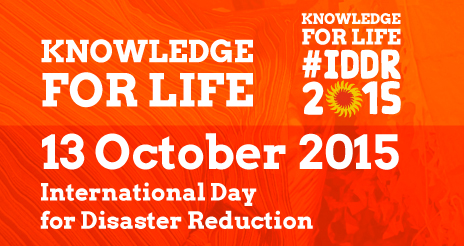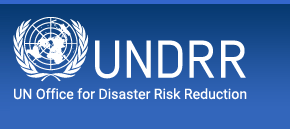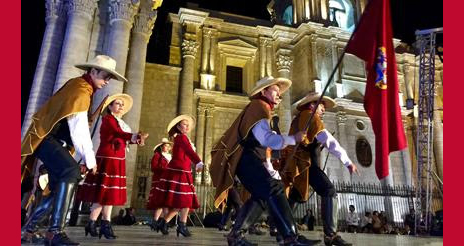- Our Mandate
- Mission and Objectives
- UNDRR in the UN
- Work Programme & Annual Reports
- Results Based System
- Work Partnerships
- Headquarters - Geneva
- SG-UN representatives for DRR
- Regional Office – The Americas and the Caribbean
- Head of the Regional Office – The Americas and the Caribbean
- What is Disaster Risk Reduction?
- What is the International Strategy?
- History of UNDRR
Mayors call for protection of heritage sites from disasters
AREQUIPA, 12 November 2015 - Mayors from the 250-member strong Organization of World Heritage Cities (OWHC) have called for member cities to include protection of cultural heritage in disaster risk management plans as set out in the Sendai Framework for Disaster Risk Reduction.
The call comes as concern is growing about the damage being inflicted on UNESCO World Heritage sites by man-made and natural hazards.
The newly adopted Sendai Framework calls for the “the protection of cultural and collecting institutions and other sites of historical, cultural heritage and religious interest.”
Mr. Rudra Singh Tamang, Mayor and CEO of Kathmandu City, Nepal, explained: “The damage caused by the 2015 earthquake to cultural and other heritage sites is around USD 200 million, with indirect effects due to loss in tourism and other income still not calculated. Our challenge now is to rebuild these heritage sites stronger and better, as our legacy for future generations.”
Mayors agreed that if adequately protected, culture and heritage can be used to promote resilient development and growth.
“The Reinvention of the Navy Yard in Philadelphia showed us how the revival and reuse of a specific heritage located in the heart of Philadelphia, the birthplace of the United States of America, can bring about economic growth and resilience,” explains Mr. Alan Greenberger, Deputy Mayor for Economic Development and Director of Commerce, Philadelphia, USA.
The Arequipa Resolution, adopted by the General Assembly of the OWHC called for the review and updating of risk management plans at world heritage sites and the integration of these plans into broader city development plans.
It also called on members to join the Making Cities Resilient: My City Is Getting Ready! Campaign of UNDRR, and support the integration of heritage and cultural conservation into the many global post-2015 development processes including the Sendai Framework, the UN Sustainable Development Goals, and the outcomes of the Climate Change Agreement at COP21.
The Mayor of Arequipa, Dr. Alfredo Zegarra Tejada, which joined the UNDRR “Making Cities Resilient” Campaign during the meeting, explained: “For Cities in Peru, where funding for cultural heritage protection falls into the hands of local chief executives, adopting preventive measures are better than responding after crisis strikes.”
The Sendai Framework for Disaster Risk Reduction 2015-2030, the global blueprint for reducing disaster risk and disaster losses, was adopted in Sendai, Japan, in March 2015. It promotes a culture of disaster prevention and makes a strong call for “cultural heritage protection” in reducing risks from disasters.
The Organization of World Heritage Cities is composed of cities with world heritage sites as a core component of these cities. Its members are from cities such as Valparaiso (Chile), Cracow (Poland) and Gyeongju (Republic of Korea).
The Organization is composed of 250 cities which contain UNESCO World Heritage sites. These 250 World Heritage Cities have a combined population of over 130 million.
The call comes as concern is growing about the damage being inflicted on UNESCO World Heritage sites by man-made and natural hazards.
The newly adopted Sendai Framework calls for the “the protection of cultural and collecting institutions and other sites of historical, cultural heritage and religious interest.”
Mr. Rudra Singh Tamang, Mayor and CEO of Kathmandu City, Nepal, explained: “The damage caused by the 2015 earthquake to cultural and other heritage sites is around USD 200 million, with indirect effects due to loss in tourism and other income still not calculated. Our challenge now is to rebuild these heritage sites stronger and better, as our legacy for future generations.”
Mayors agreed that if adequately protected, culture and heritage can be used to promote resilient development and growth.
“The Reinvention of the Navy Yard in Philadelphia showed us how the revival and reuse of a specific heritage located in the heart of Philadelphia, the birthplace of the United States of America, can bring about economic growth and resilience,” explains Mr. Alan Greenberger, Deputy Mayor for Economic Development and Director of Commerce, Philadelphia, USA.
The Arequipa Resolution, adopted by the General Assembly of the OWHC called for the review and updating of risk management plans at world heritage sites and the integration of these plans into broader city development plans.
It also called on members to join the Making Cities Resilient: My City Is Getting Ready! Campaign of UNDRR, and support the integration of heritage and cultural conservation into the many global post-2015 development processes including the Sendai Framework, the UN Sustainable Development Goals, and the outcomes of the Climate Change Agreement at COP21.
The Mayor of Arequipa, Dr. Alfredo Zegarra Tejada, which joined the UNDRR “Making Cities Resilient” Campaign during the meeting, explained: “For Cities in Peru, where funding for cultural heritage protection falls into the hands of local chief executives, adopting preventive measures are better than responding after crisis strikes.”
The Sendai Framework for Disaster Risk Reduction 2015-2030, the global blueprint for reducing disaster risk and disaster losses, was adopted in Sendai, Japan, in March 2015. It promotes a culture of disaster prevention and makes a strong call for “cultural heritage protection” in reducing risks from disasters.
The Organization of World Heritage Cities is composed of cities with world heritage sites as a core component of these cities. Its members are from cities such as Valparaiso (Chile), Cracow (Poland) and Gyeongju (Republic of Korea).
The Organization is composed of 250 cities which contain UNESCO World Heritage sites. These 250 World Heritage Cities have a combined population of over 130 million.
Related links
Sendai Framework for Disaster Risk Reduction
Follow the UNDRR news online:
 International Day for Disaster Reduction #DIRD 2015 Knowledge for Life
International Day for Disaster Reduction #DIRD 2015 Knowledge for Life
More information

 Traditional dancers performing at the opening of the 13th World Congress of the Organization of World Heritage Cities (November 3-6) which took place in the historic centre of Arequipa, Peru. (Photo: UNDRR)
Traditional dancers performing at the opening of the 13th World Congress of the Organization of World Heritage Cities (November 3-6) which took place in the historic centre of Arequipa, Peru. (Photo: UNDRR)